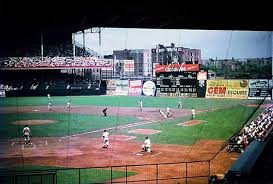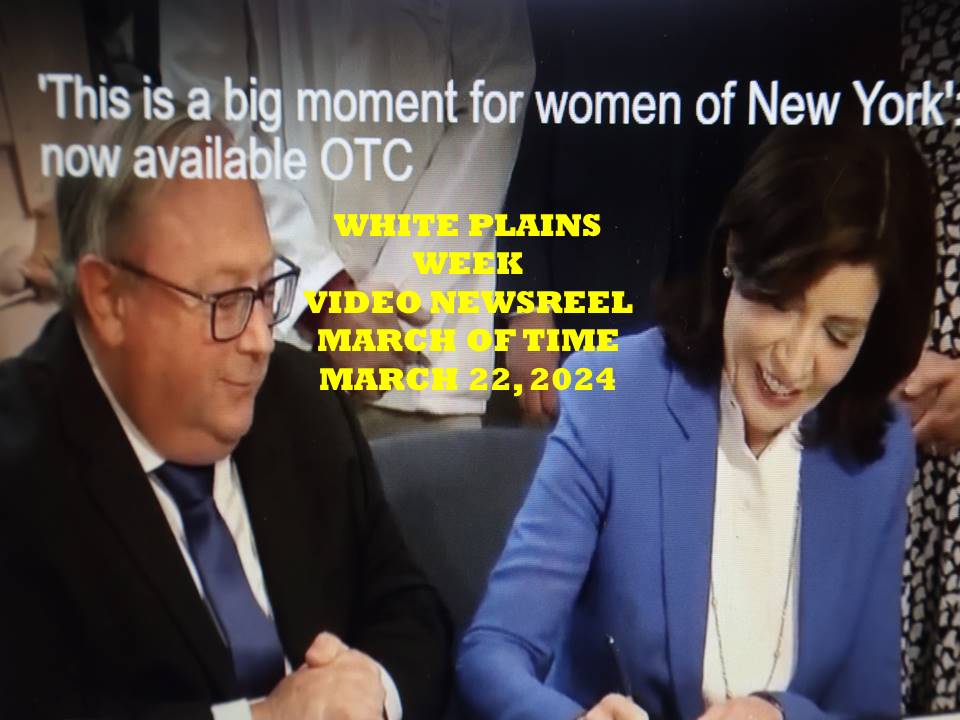Hits: 23
 WPCNR VIEW FROM THE UPPER DECK. By Bull Allen. August 9, 2017:
WPCNR VIEW FROM THE UPPER DECK. By Bull Allen. August 9, 2017:
I’m sitting in the Ebbets Field Gondola where Red Barber and Connie Desmond sat and broadcast Dodger baseball on WMGM 1050, and Red gave Vince Scully the chance to broadcast Dodger games, and the rest of course, is history.
I’m looking back on the echoing green of memory of a ballpark, a culture, a feeling that baseball destroyed back in 1957, when baseball allowed the Dodgers and the Giants to move to the West Coast.
When I was a kid, Gussie Moran the tennis player (of all people), Ted Brown and Marty Glickman did Baseball Extra on WMGM, and on WOR-TV there was Happy Felton’s Knothole Gang where Felton hosted different groups of little leaguers on every telecast.
Hilda swung her bell from the upper deck when the Dodgers were rallying. The one game I saw in Ebbets Field was from the lower leftfield deck. I swear you were close enough to Frank Robinson the leftfielder to see the sweat on his neck. And the Dodger lit up Warren Hacker.
No uniforms were whiter than Dodger home whites. The field was so colorful. The banked rightfield wall with its colorful billboards The pennants flapping from the “Schaeffer Scoreboard” and the noise. The catwalks you had to walk on into the upper deck. The park was edgy.
The fans loved the Dodgers. The players: Gil, Duke, Campy, Skoonj, lived in the neighborhood around the ballpark, I think. They were our players. They played for us.
But Walter O’Malley the owner of the Dodgers destroyed all that when he did not like the Little Bandbox on Flatbush and Bedford. He wanted a bigger ballpark. New York City refused to build one for him, but Los Angeles would. And San Francisco would build one for the Giants. Ever since baseball instead of serving the communities it plays in has used the communities, blackmailed them, and rarely given back.
Baseball now just takes.
There had been franchise shifts in baseball before the abandonment of Brooklyn USA and Coogan’s Bluff where the New York Giants played by major league baseball,
Bill Veeck shifted the St. Louis Browns to Baltimore. The Perini family shifted the hapless Boston Braves to Milwaukee. The storied Philadelphia A’s moved to Kansas City. But those cities did not support the Browns and the Braves. Brooklyn drew one million fans in Brooklyn their last year. The Giants 600,000.
They moved for money.
Baseball now has the largest attendance of any sport except soccer and sports car racing. Tickets to baseball games, concessions, season tickets are dear. But the caring for the game the way it used to be is gone, it’s just not there.
I was not a Dodger fan growing up. I rooted for the Yankees because I liked Mel Allen and the Yankees represented excellence consistency. Yankee Stadium was dignified, an environment where the men went to games in suits and ties. Ebbets Field was different. The fans were involved they knew the game, they cared. They had passion.
There was no passion in the Yankee Stadium of 1957. Yogi’s game winning homers were greeted like a opera diva’s aria.
O’Malley and his fellow carpet bagger Horace Stoneham owner of the New York Giants, sold them all out.
They started a trend:
Within 15 years the Milwaukee Braves moved to Atlanta. In four years the Washington Senators moved to Minneapolis and became contenders, leaving Washington with an expansion team, when then moved to Texas. Kansas City moved again to Oakland. The Montreal Expos on the verge of a dynasty were allowed to move to Miami. All moves to make more money.
What did the New York area get back:
The New York Mets who throughout their 55 Years in baseball (most of which have been forgettable) have tried to supplant the lovable Bums’ personality, glamorizing mediocrity, and making excuses for wrecking not one but three superb pitching staffs: The Seaver, Koosman, Gentry, staff of the 1969-73 Mets; The Viola, Gooden, Darling staff of the mid-80s, and now the pitchers of the hapless Terry Collins era, destroyed by overworking young arms too soon by pitching coaches who have never had big seasons in the big leagues.
But the old Dodgers were not mediocre and they never made excuses and they played hard.
They were swashbuckling even when they lost: Babe Herman, Van Lingle Mungo, Zack Wheat, Phil Cavereta, and of course the team that broke baseball’s color line: Reese, Gilliam, Jackie, Gil, Campy, Podres, Newk, Roger, Hoak, Gino, the Duke, Furillo, Ed Roebuck. The team did not have the glamour and polish of the Yankees, but The Dodgers had style, class, and heart.
You believed the Dodgers played for Brooklyn. When they won they brought joy to Brooklyn, when they lost, well that’s all right we’ll get em tomorrow. That was back when as a fan you wanted to win every game, even though you knew it was impossible. That was when baseball had such a grip on the young and the old, that you believed you could win. You flipped baseball cards.
So New York still misses the Dodgers. They were one of a kind. They gave fans the best moments of baseball. The executives before O’Malley built teams that lasted. We all knew it was a business, but we did not care. They were our guys.
Now, today we know all too well baseball is a business, and because we do know that, we don’t care. Perhaps some cities still do. Boston loves the Red Sox. Chicago the Cubs and the Pale Hose. St Louis the Cardinals.
When they killed the Brooklyn Dodgers sixty years ago, they killed what made baseball great: it’s heart—now baseball has no heart.
You can win by finishing second.
You can cheat.
The umpire gets no respect.
The baseball keeps getting more lively every year
The pitching is worn out
You can’t see it on the radio anymore.
